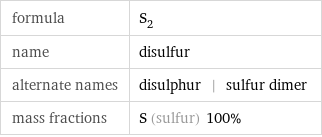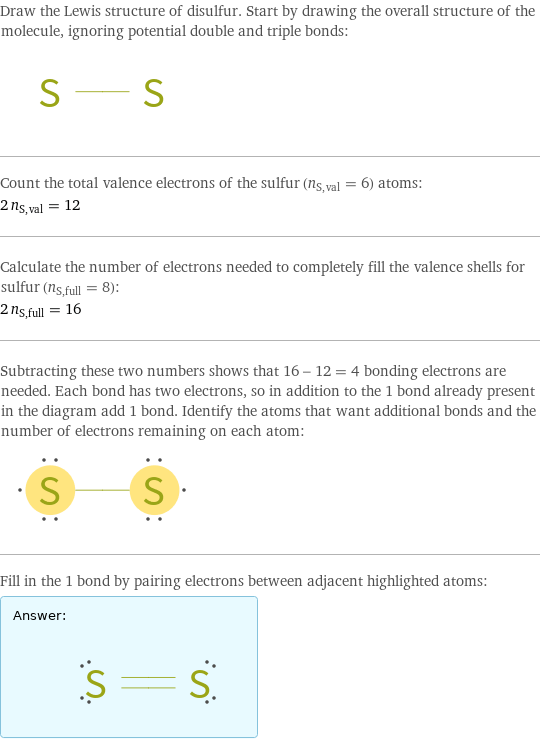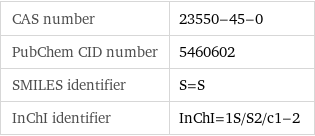Input interpretation

disulfur
Chemical names and formulas

formula | S_2 name | disulfur alternate names | disulphur | sulfur dimer mass fractions | S (sulfur) 100%
Lewis structure

Draw the Lewis structure of disulfur. Start by drawing the overall structure of the molecule, ignoring potential double and triple bonds: Count the total valence electrons of the sulfur (n_S, val = 6) atoms: 2 n_S, val = 12 Calculate the number of electrons needed to completely fill the valence shells for sulfur (n_S, full = 8): 2 n_S, full = 16 Subtracting these two numbers shows that 16 - 12 = 4 bonding electrons are needed. Each bond has two electrons, so in addition to the 1 bond already present in the diagram add 1 bond. Identify the atoms that want additional bonds and the number of electrons remaining on each atom: Fill in the 1 bond by pairing electrons between adjacent highlighted atoms: Answer: | |
3D structure

3D structure
Basic properties

molar mass | 64.12 g/mol phase | gas (at STP)
Units

Thermodynamic properties

specific heat capacity c_p | gas | 0.5069 J/(g K) molar heat capacity c_p | gas | 32.5 J/(mol K) specific free energy of formation Δ_fG° | gas | 1.243 kJ/g molar free energy of formation Δ_fG° | gas | 79.7 kJ/mol specific heat of formation Δ_fH° | gas | 2.006 kJ/g molar heat of formation Δ_fH° | gas | 128.6 kJ/mol specific entropy S° | gas | 3.559 J/(g K) molar entropy S° | gas | 228.2 J/(mol K) (at STP)
Chemical identifiers

CAS number | 23550-45-0 PubChem CID number | 5460602 SMILES identifier | S=S InChI identifier | InChI=1S/S2/c1-2